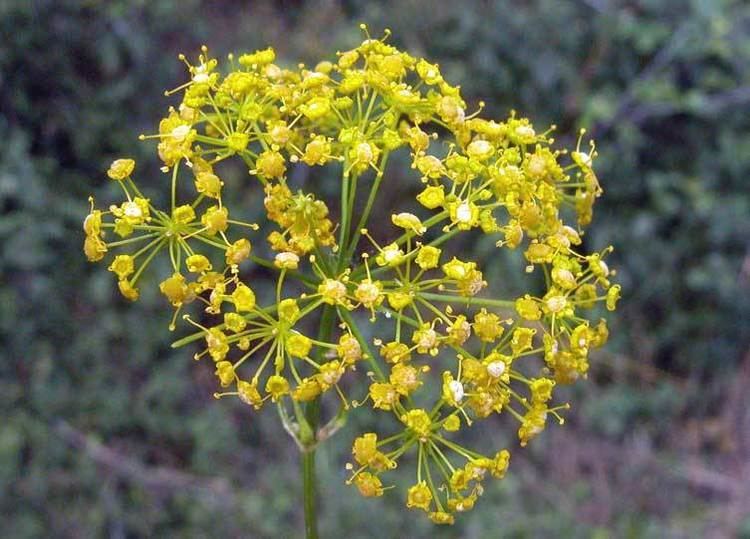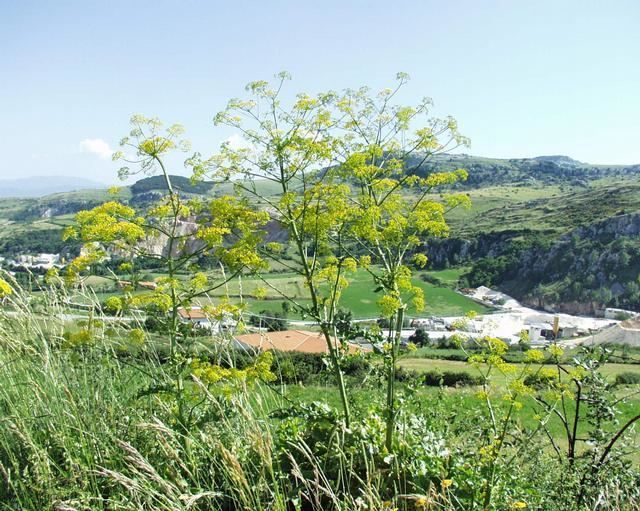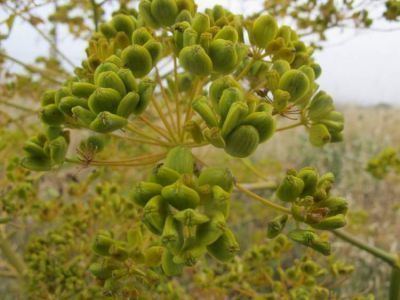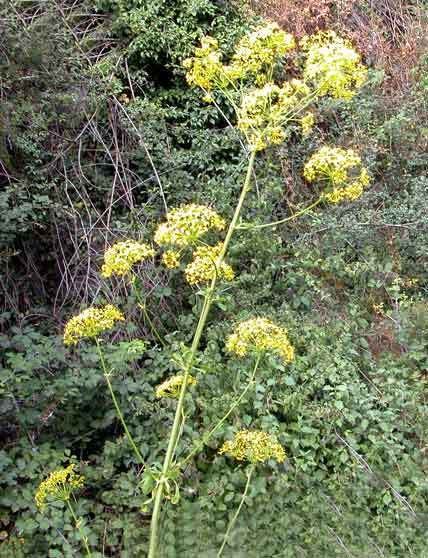Rank Species | Genus Opopanax | |
 | ||
Similar Laserpitium, Papilio alexanor, Ptychotis saxifraga, Canarium strictum, Scandix | ||
Opopanax chironium, common name Hercules-all-heal, also known as sweet myrrh or bisabol myrrh, is a herb belonging to the family Apiaceae.
Contents

Subspecies
Description

Opopanax chironium grows 1–3 metres (3 ft 3 in–9 ft 10 in) high. This perennial herb has a branching stem, thick and rough close to the base. Leaves are serrate, pinnate, with long petioles. It produces a large, flat, yellow inflorescence at the top of the branches.
Uses

This plant is used in the production of certain perfumes. A consumable resin known as opopanax can be extracted from the Opopanax plant by cutting at the base of a stem and sun-drying the juice that flows out. Though people often find the taste acrid and bitter, the highly flammable resin can be burned as incense to produce a scent somewhat like balsam or lavender.

The resin has been used in the treatment of spasms, and, before that, as an emmenagogue, in the treatment of asthma, chronic visceral infections, hysteria and hypochondria. Opopanax resin is most frequently sold in dried irregular pieces, though tear-shaped gems are not uncommon.
Distribution and habitat

The plant thrives in warm climates like Iran, Italy, Greece, Turkey and Somalia, but also grows in cooler climates. Some view opopanax grown in cooler climates as being of inferior quality.
